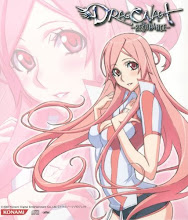Harajuku style originated among teens on the streets of the Harajuku Shopping District in Tokyo. It may have been brought to many people's attention by American singer Gwen Stefani, but the evolution of the style certainly didn't begin with her and it certainly won't end with her. Like many "street fashions" it is difficult to characterize, both because it is constantly changing and because it has many manifestations. There is no cookie-cutter approach to the style, but if you want to dress in Harajuku style, here are some guidelines to get you started.
STEPS!
Mix and (mis)match different fashions. What is now known as Harajuku (like Halloween in Japan every Sunday) style started as teens in the district began to integrate traditional Japanese attire, especially kimonos and geta sandals, into their dress. Before, they wore primarily clothes that were influenced by the West, but by mixing the traditional with the modern, they created a new style. Other examples of mixing and matching including the punk look with the schoolgirl uniform or a goth look with designer clothes. In Harajuku, mixing different styles and mismatching colors and patterns is encouraged--you can do anything you want, as long as your outfit is a thoughtful expression of your individuality .
Become familiar with variations of style in the Harajuku district. It's impossible to pinpoint one "Harajuku style." Many styles have originated or developed on the streets of Harajuku, and many Harajuku girls (and boys) integrate one or more of these somewhat more defined styles into their outfits.
Dress in layers. One of the hallmarks of Harajuku is layering. Sweaters, vests, or jackets over blouses over t-shirts, dresses worn with leggings, and so on. Layering clothes (or giving the appearance of layering by wearing ruffled dresses, for example) allows you to mix and match a wider variety of different styles, and adds more dimension to your outfit.
Customize your clothes. Secondhand clothing and do-it-yourself styles are popular ingredients in a Harajuku outfit. Like that flowered skirt but think it would look cuter with a ribbon pinned on it or with a more uneven, angular hemline? Get out the scissors and glue and make your store-bought clothes uniquely yours. Or, go even further and make your own skirt. Cutting the fabric to create bold angles and lines can make even a plain black dress appear remarkable and fun. Accessorize. Add any wild accessories you have, such as belts, earrings, hair clips, jewelry, and handbags. Remember, accessories can be colorful and loud, and they don't have to match your clothes. Speaking of loud, in decora, a particular Harajuku style, accessories embellish an outfit from head to toe, and objects such as bells are sometimes used to add an aural dimension to the wardrobe.
Dress in layers. One of the hallmarks of Harajuku is layering. Sweaters, vests, or jackets over blouses over t-shirts, dresses worn with leggings, and so on. Layering clothes (or giving the appearance of layering by wearing ruffled dresses, for example) allows you to mix and match a wider variety of different styles, and adds more dimension to your outfit.
Customize your clothes. Secondhand clothing and do-it-yourself styles are popular ingredients in a Harajuku outfit. Like that flowered skirt but think it would look cuter with a ribbon pinned on it or with a more uneven, angular hemline? Get out the scissors and glue and make your store-bought clothes uniquely yours. Or, go even further and make your own skirt. Cutting the fabric to create bold angles and lines can make even a plain black dress appear remarkable and fun. Accessorize. Add any wild accessories you have, such as belts, earrings, hair clips, jewelry, and handbags. Remember, accessories can be colorful and loud, and they don't have to match your clothes. Speaking of loud, in decora, a particular Harajuku style, accessories embellish an outfit from head to toe, and objects such as bells are sometimes used to add an aural dimension to the wardrobe.



















0 comments:
Post a Comment